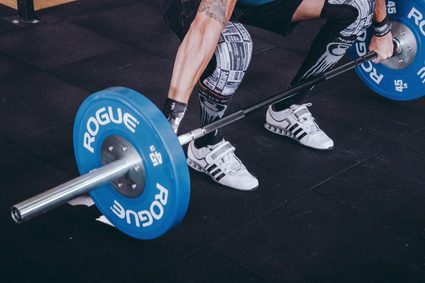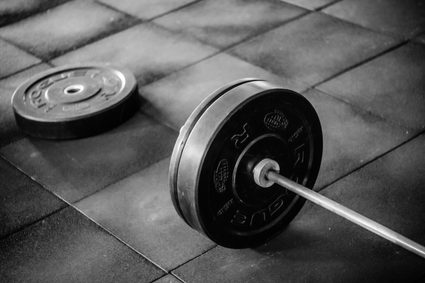Wilks Calculator
The Wilks calculator allows you to estimate your weightlifting abilities so that you can compare yourself with other lifters, regardless of their body weight or sex. Unlike the bench press calculator, this calculator is not generally used to track your progress but to decide who is the superior weightlifter (even though they compete in different divisions).
Read on to learn what is the Wilks formula and how to apply it correctly. Moreover, you will find information about weightlifting as an exercise, Olympic weightlifting, and weightlifting equipment, such as weightlifting shoes.
💡 If you want to find out how many calories you can burn while weightlifting, our calories burned weightlifting calculator is waiting for you. On the other hand, you can also assess your weightlifting capacity by checking out our one-rep max calculator.
What is the Wilks coefficient?
The Wilks coefficient was introduced to make it possible to compare the strength of powerlifters despite their differences in weight and gender, and the traditional categories weightlifters are divided into for competitions. Robert Wilks, CEO of Powerlifting Australia, devised the Wilks coefficient.

The Wilks formula
There is one universal formula that we can apply to all weightlifters, both male and female. The only thing that differs between the two sexes is the coefficients used in the equation.
The Wilks formula is as follows:
where:
- is the maximum weight lifted (in kilograms);
- is the body weight of the lifter; and
- , , , , , and denote coefficients.
Coefficients for men are:
- ;
- ;
- ;
- ;
- ; and
- .
Coefficients for women are:
- ;
- ;
- ;
- ;
- ; and
- .
How to use the Wilks calculator?
Let's say you want to compare the weightlifting capabilities of two different weightlifters. The first weightlifter is a female champion who weighs 48 kg and competes in the lowest bodyweight division. The second one is a man who weighs 107 kg and competes in the highest bodyweight division.
- Find out what the female lifter's personal record was. Let's say it was 94 kg.
- Find out what the male lifter's personal record was. Let's say it was 208 kg.
- Calculate the Wilks coefficient for the female lifter using our Wilks calculator. You will be left with a result of 124.5.
- Repeat the above step for the male lifter. You will obtain 123.5 as a result.
- Despite being able to lift less weight, the female weightlifter has scored higher. This result means that she is objectively better than the male lifter.
Weightlifting
Weightlifting is a discipline of strength athletics, where contests consist of lifting a barbell with plates once. It is also a popular power training exercise, performed in almost every gym across the world. Weightlifting uses a weight load made of steel or cast iron. The barbell is a steel bar or rod to which iron disk weights are attached at each end on a revolving sleeve. Some other activities like training, bodybuilding, and powerlifting also use weights.

The history of weightlifting is quite long. For many prehistoric tribes, lifting a special rock was a test of manhood. Some regions of Germany, Switzerland, Spain, and Montenegro still practice competitive stone lifting.
Modern weightlifting competitions were founded in the 18th and 19th centuries. They started as shows performed in circuses and theaters. The first international weightlifting competition took place in London in 1891, and four years later, it appeared at the Olympic Games (1896). In 2000 the International Olympic Committee added a weightlifting competition for women to the Olympic Games program. The International Weightlifting Federation (IWF) has controlled the sport of weightlifting ever since its foundation in the year 1905. IWF has its headquarters in Budapest, Hungary.
Olympic weightlifting
Two lift competitions are held at the modern Olympic Games. The first one is the snatch, and the second is the clean and jerk. The snatch is a wide grip, one-move lift. The clean and jerk is a close grip, two-move lift. Each athlete has three attempts in each style; the two heaviest, successful lifts (within a bodyweight category) are taken into account for the overall result.
Bodyweight categories are different for male and female competitors. You can see them below:
Men's weight classes:
- 56 kg (123 lb)
- 62 kg (137 lb)
- 69 kg (152 lb)
- 77 kg (170 lb)
- 85 kg (187 lb)
- 94 kg (207 lb)
- 105 kg (231 lb)
- 105 kg and over (231 lb+)
Women's weight classes:
- 48 kg (106 lb)
- 53 kg (117 lb)
- 58 kg (128 lb)
- 63 kg (139 lb)
- 69 kg (152 lb)
- 75 kg (165 lb)
- 90 kg (198 lb)
- 90 kg and over (198 lb+)
While other strength sports test an athlete's limit strength, weightlifting tests explosive human strength (aspects of ballistic limits). The lifts are executed faster, with greater mobility and a greater range of motion than other strength movements.
Weightlifting shoes
Let's take a closer look at the equipment used while weightlifting. A few useful items make this discipline safer and more comfortable for athletes.
- Barbell — Men's Olympic barbell weighs 20 kg (44 lbs) with a shaft diameter of 28 mm and a length of 2200 mm. A women's Olympic barbell weighs 15 kg (33 lbs) and has a shaft diameter of 25 mm with a length of 2010 mm.
- Plates — Olympic plates have standardized coloring for particular weights:
Color | Weight (kg) | Weight (lb) |
|---|---|---|
Red | 25 | 55.12 |
Blue | 20 | 44.09 |
Yellow | 15 | 33.07 |
Green | 10 | 22.05 |
White | 5 | 11.02 |
Red | 2.5 | 5.51 |
Blue | 2 | 4.41 |
Yellow | 1.5 | 3.31 |
Green | 1 | 2.20 |
White | 0.5 | 1.10 |
- Collar — Secures the plates on the bar on each sleeve. These weigh 2.5 kg each.
- Belt — It helps to increase intra-abdominal pressure.
- Chalk — Improves the grip between the hands and the barbell by eliminating sweat.
- Tape — Applied, e.g., on the wrists and other body parts to prevent injuries and reduce pain.
- Shoes — Designed with a raised heel of 0.5" to 1.5" and one or two metatarsal straps. The raised heel allows for a deeper squat under the bar and helps to maintain an upright torso. The rigid soles of the shoes help to resist compression under heavy loads.
Don't forget to check out our bench press pyramid calculator if you find this tool interesting. We also have our training pace calculator, where you can read some helpful tips for more effective training.